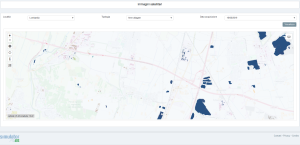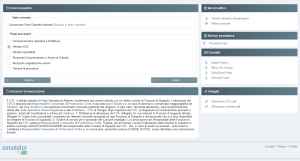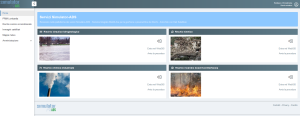Integrated modular system for hazard management and prevention – enriched with satellite data
SIMULATOR-ADS (Integrated modular system for hazard management and prevention – enriched with satellite data) is a project financed by the Lombardy Region to develop an innovative platform and decision support tool (DSS) for local Public Administrations (PA) towards a Civil Protection 2.0. The platform, also called SIMULATOR-ADS, responds to the real needs to safeguard the population and the wealth of the territory (services, activities, environmental assets) and to protect and optimise regional infrastructure systems. The system is implemented to manage risks due to natural causes (mostly extreme events of a meteorological and seismic nature) or of anthropogenic origin (technological and chemical/industrial accidents).
SIMULATOR-ADS exploits the experience and results gained by some of the partners within the SIMULATOR project, which led to the implementation at prototype level of a Decision Support System for spatial planning and emergency management.
SIMULATOR-ADS has led to an improvement of the functionalities already existing in SIMULATOR (on the basis of the feedback obtained from the stakeholders involved in the project, where the system is in use at the prototype level) by integrating and, therefore, making available to local authorities a wider range of both risk management procedures and multi-source information of a heterogeneous nature, static and dynamic, in real and/or near real time, related to the territory of competence. In particular, such information may come:
- from the processing of remote sensing images, acquired through the Sentinel data hub of the Copernicus programme;
- from reports coming directly from the territory, in real time, from operators, volunteers and informed citizens, acquired through smart-apps.
THE ROLE OF TERRARIA
TerrAria was responsible for:
- improving and enhancing the mapping engine already started in the SIMULATOR project;
- the integration of all components into the IT platform, in particular the new DSS developed by the CNR. This service was developed in an open-source environment, also to ensure that the distribution of the system is free from the purchase of licences;
- allowing the acquisition of temporally ‘dynamic’ information by integrating the satellite image analysis service developed by IREA and including the results of this processor in the mapping engine so as to allow the user to assess post-event the actual damage areas obtained from the satellite information, exploiting data from the European Earth Observation Programme ‘Copernicus’ and IREA’s experience in estimating biogeophysical parameters and mapping burnt areas.






